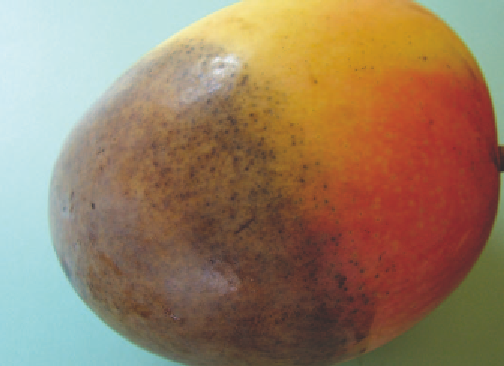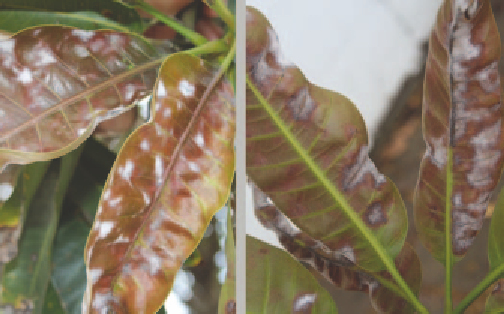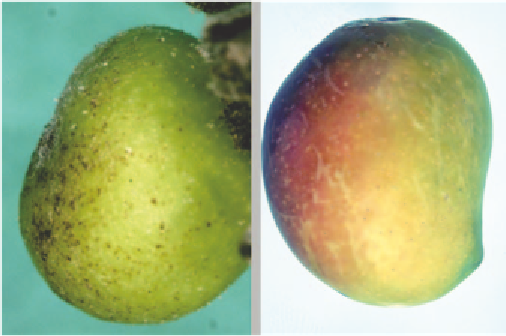Agriculture Reference
In-Depth Information
Fig 12.30 Severe powdery mildew on mango flowers, bracts and
fruitlets.
Fig 12.29 Close up of Phytophthora
postharvest fruit rot symptoms.
infected when soil infested with the pathogen was splashed
onto fruit during heavy rain. Although Phytophthora
postharvest fruit rot is not an important or widespread
disease at this stage, there is potential for the pathogen to
become a serious problem in mango nurseries that do not
follow clean nursery practices.
Management
•
Copper fungicide sprays used for anthracnose control will
help to control the disease in the fi eld (covering the lower
branches is essential).
Remove all infected fruit from the orchard.
•
Fig 12.31 Powdery mildew symptoms on mango leaves. Left: upper
surface; right: lower surface.
POWDERY MILDEW
■
Cause
The fungus
Oidium mangiferae
.
Symptoms
The first symptoms of the disease are scattered patches of
superficial cottony, white growth that develops on young
shoots, f lowers and small fruit. Young leaves are most
susceptible, with the white powdery coating of spores
forming on either or both the underside or topside of
leaves, depending on the susceptibility of the cultivar.
On infected panicles, the powdery growth can cover all
tissues, resulting in brown, shrivelled necrosis and
premature fruit drop. Older fruit that survive the
infection exhibit purplish-brown, blotchy, chapped or
rosetted areas on the skin.
Fig 12.32 Powdery mildew symptoms on fruit. Left: magnified pinhead
symptoms on very young fruit. Right: scarring on mature fruit.
either from inoculum harboured on the tree or by air-borne
conidia blown into the field from other affected sites. The
disease is more prevalent in winter and spring when cool,
dry weather and periods of high humidity occur.
Source of infection and spread
The white mildew consists of large numbers of spores that
disperse in the wind. Disease outbreaks may be initiated















